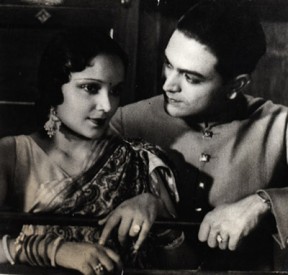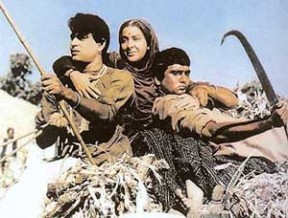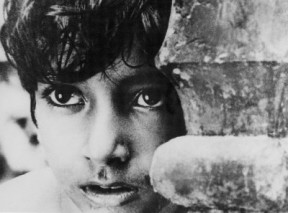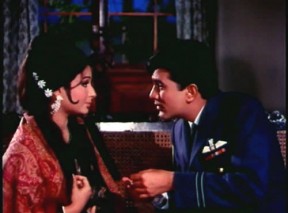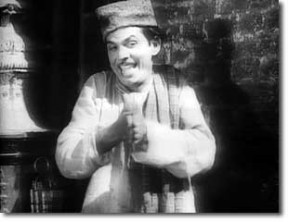The Indian film industry is one of the largest in the world, and Indian cinema is unmatched in its variety. Tracing the history of Indian cinema through the traditional methods is not tedious – it is too gargantuan a task. This is just an attempt to revisit the Indian film history, and look at various aspects that have made Indian films so memorable, through different prisms. This time, we take a look at 10 celebrated, creative collaborators. There would be needless to say, problems with this list, for no finite list can be all-encompassing.
Himanshu Rai and Franz Osten: In the 1930s when Bombay Talkies was launched as a public limited company, founder and one of the pioneers of Indian cinema Himanshu Rai (seen above with Devika Rani) gathered the who’s who of talented young Germans of the time. Among them were filmmaker Franz Osten, cinematographer Josef Wirsching, sound engineer LenHartley and architect Karl von Spreti. Osten directed films like Jawani Ki Hawa (1935), Achhut Kanya (1936), Jeevan Naiyya (1936), Janambhoomi (1936) and Jeevan Prabhat (1937). After Rai died in 1940, the Germans left India. Bombay Talkies too collapsed soon.
V Damle and S Fatehlal: The two were the Prabhat Film company partners, who directed films like Sant Tukaram in the 1930s. They excelled with spiritual/religious films like Gopal Krishna (1929) and Sant Dnyaneshwar (1940). The latter had one of the earliest forms of a freeze shot in Indian film history. Unfortunately, both died in oblivion, and remain unknown entities, despite making socially relevant films in both Hindi and Marathi.
Naushad and Mehboob Khan: They were known as the mega pair of blockbusters: Andaz (1949), Aan (1952), Mother India (1957) and Son of India (1962). Their partnership was legendary. Changes in the script by the director would upset the composer, and the latter would often suggest changes while the shooting would be on. Their collaboration went way beyond that of a filmmaker and a musician: each often had a say in the other’s work.
Khwaja Ahmad Abbas and VP Sathe: The two made an unusual pair of writers, when they worked on screenplays. Their collaborations ranged from V Shantaram’s Dr Kotnis Ki Amar Kahani (1946) to Raj Kapoor’s Barsaat (1949), Shree 420 (1955) and Bobby (1973).
Satyajit Ray and Bansi Chandragupta: At one point of time, there seemed to be little change in the credits of Satyajit Ray’s films, and among these was the name of Bansi Chandragupta as art director / production designer. The latter remained a constant right from the Apu trilogy of Pather Panchali (1955), Aparajito (1956) and Apur Sansar (1959), to Jalsaghar (1958), Devi (1960), Teen Kanya (1961) and finally Shatranj Ke Khiladi (1977). The partnership ended only with Chandragupta’s demise in 1981.
Shakti Samanta and Gulshan Nanda: The first was a filmmaker, and the second the uncrowned king of Hindi paperbacks. When they teamed up, they came up with one hit after another: Aradhana (1969), Kati Patang (1970), Ajnabee (1974) and Mehbooba (1976), incidentally all starring the star of the time – Rajesh Khanna. Once they split, each had a range of flops. Samanta’s slide started with Anand Ashram (1977) and Nanda’s with Jheel Ke Us Paar (1973).
Dev Anand, Vijay Anand and Sachin Dev Burman: When the two brothers from the Navketan banner made a film, it was a foregone conclusion that the score would be provided by SD Burman. The films would be a hit, and so would the songs: Funtoosh (1956), Kala Pani (1958), Guide (1965), Tere Mere Sapne (1971). When SD’s son Rahul Dev emerged on the scene, he took over in Hare Rama Hare Krishna (1971), another resounding success.
Raj Kapoor, Radhu Karmakar and Mukesh: The grand showman of Bollywood had two constants: cameraman Radhu Karmakar and playback singer Mukesh. Karmakar worked as cinematographer in each of Kapoor’s films. The filmmaker even credited him for directing Jis Desh Mein Ganga Behti Hai (1960) when Karmakar wanted to go his own way. Mukesh made Kapoor’s songs immortal with his voice, right from Barsaat in 1948 till his death in 1976. Kapoor could not get over his friend’s death, and made the latter’s son Nitin Mukesh sing for Satyam Shivam Sundaram (1978).
Guru Dutt and Johnny Walker: This was possibly one of the strangest of combinations to be seen in mainstream Hindi cinema: the king of tragedy and the king of comedy together. If that was not all, Walker would more often than not be cast in song sequences: from Pyaasa (1957) and Kaagaz Ke Phool (1959) to Chaudvin Ka Chand (1960). They remained inseparable till the end.
Shankar and Jaikishan: If there was a charbusting duo, it was this. From ‘Teri pyari pyari surat ko’ in Sasural to ‘Ramaiyya vastavaiyya’ in Shree 420, in the 50s and 60s, they reigned supreme. Theirs was the most sought-after composer pair in the industry. They eventually went their separate ways and after Jaikishan died in 1971, Shankar used the brand name of Shankar Jaiskishan but could not meet with the same amount of success. By the time Shankar died in 1987, the music industry had changed.
Subir Ghosh is a New Delhi-based independent journalist and writer. He has worked with the Press Trust of India (PTI) and The Telegraph, and handled publications/communications for the Centre for Science and Environment (CSE), the Federation of Hotels and Restaurant Associations of India (FHRAI), and the Wildlife Trust of India (WTI). He specialises in Northeast affairs and is an advisory council member with the Centre for Northeast Studies (C-NES). He is the author of ‘Frontier Travails: Northeast – The Politics of a Mess’ published by Macmillan India, and has won two national awards in children’s fiction. His subjects of interest include conflict, ethnicities, wildlife, human rights, poverty, media, and cinema. He blogs at www.write2kill.in






